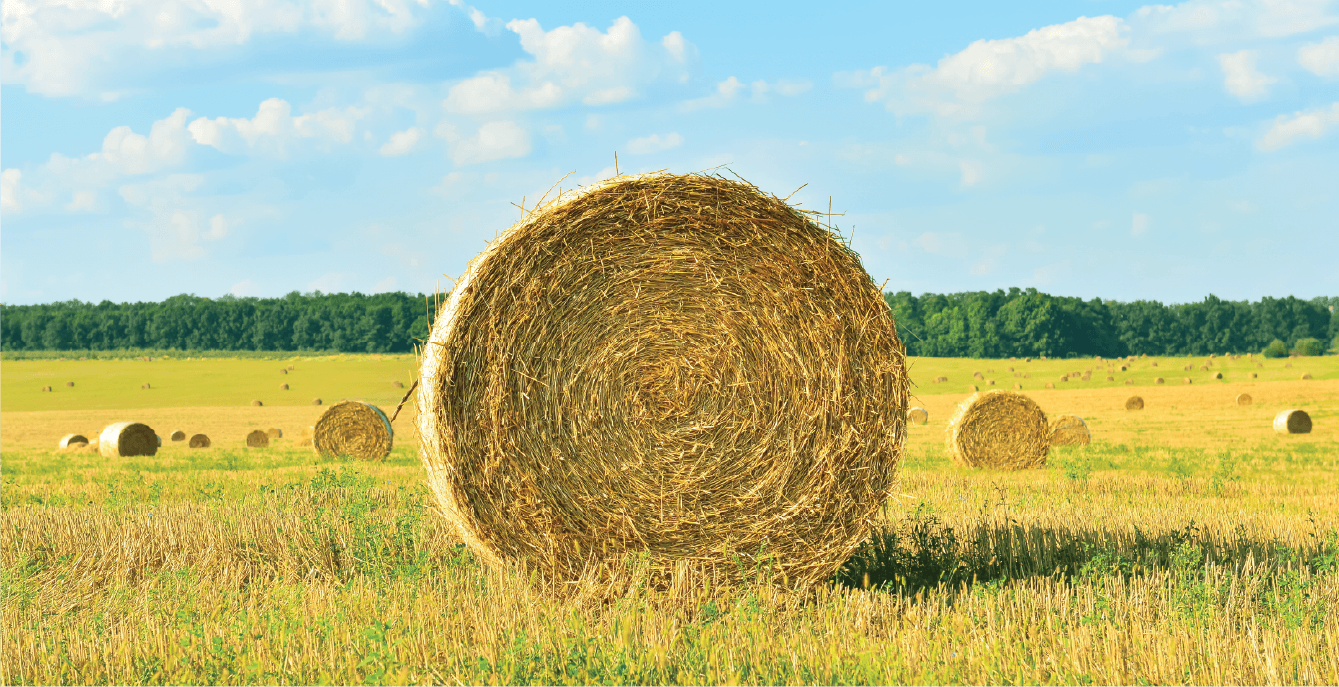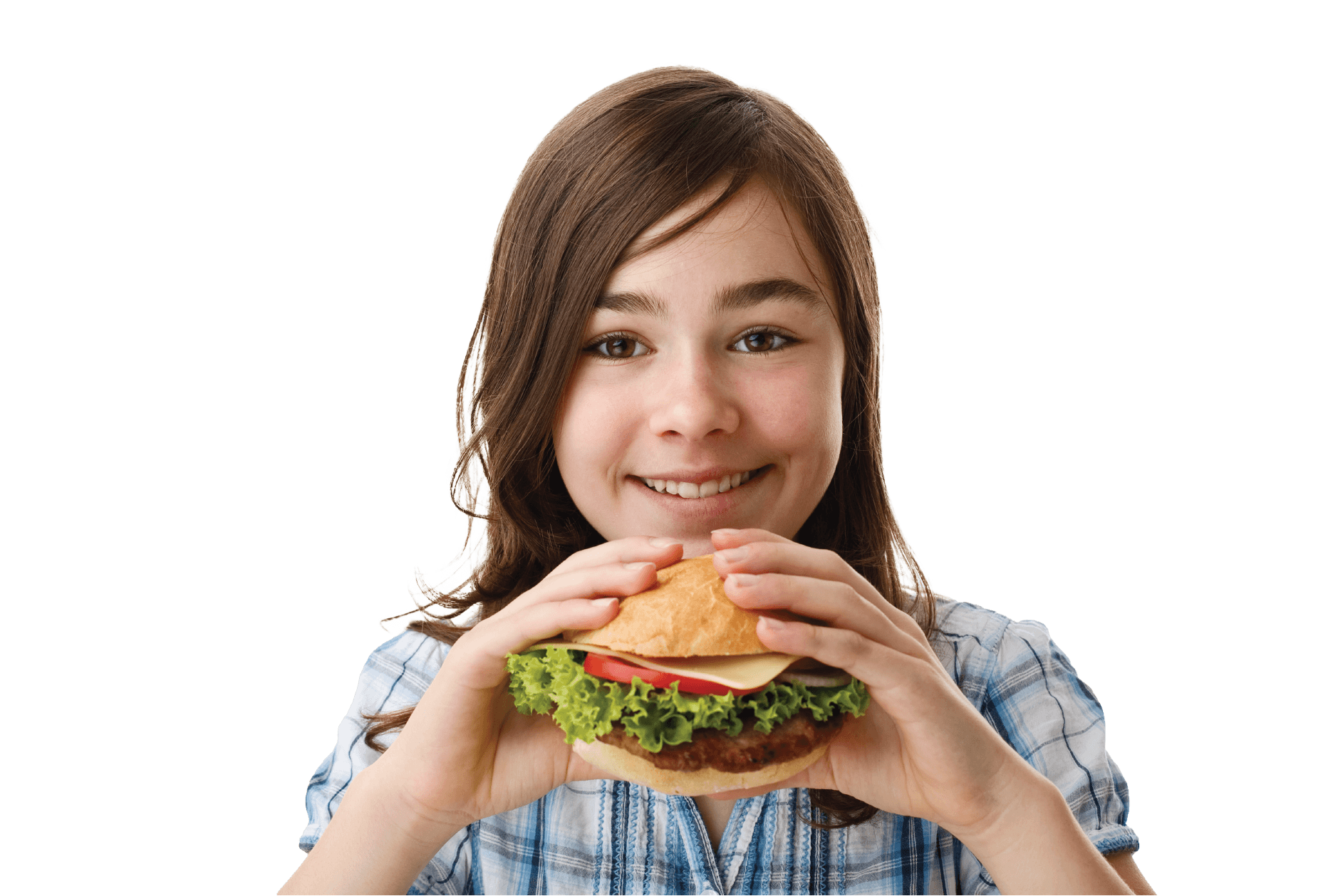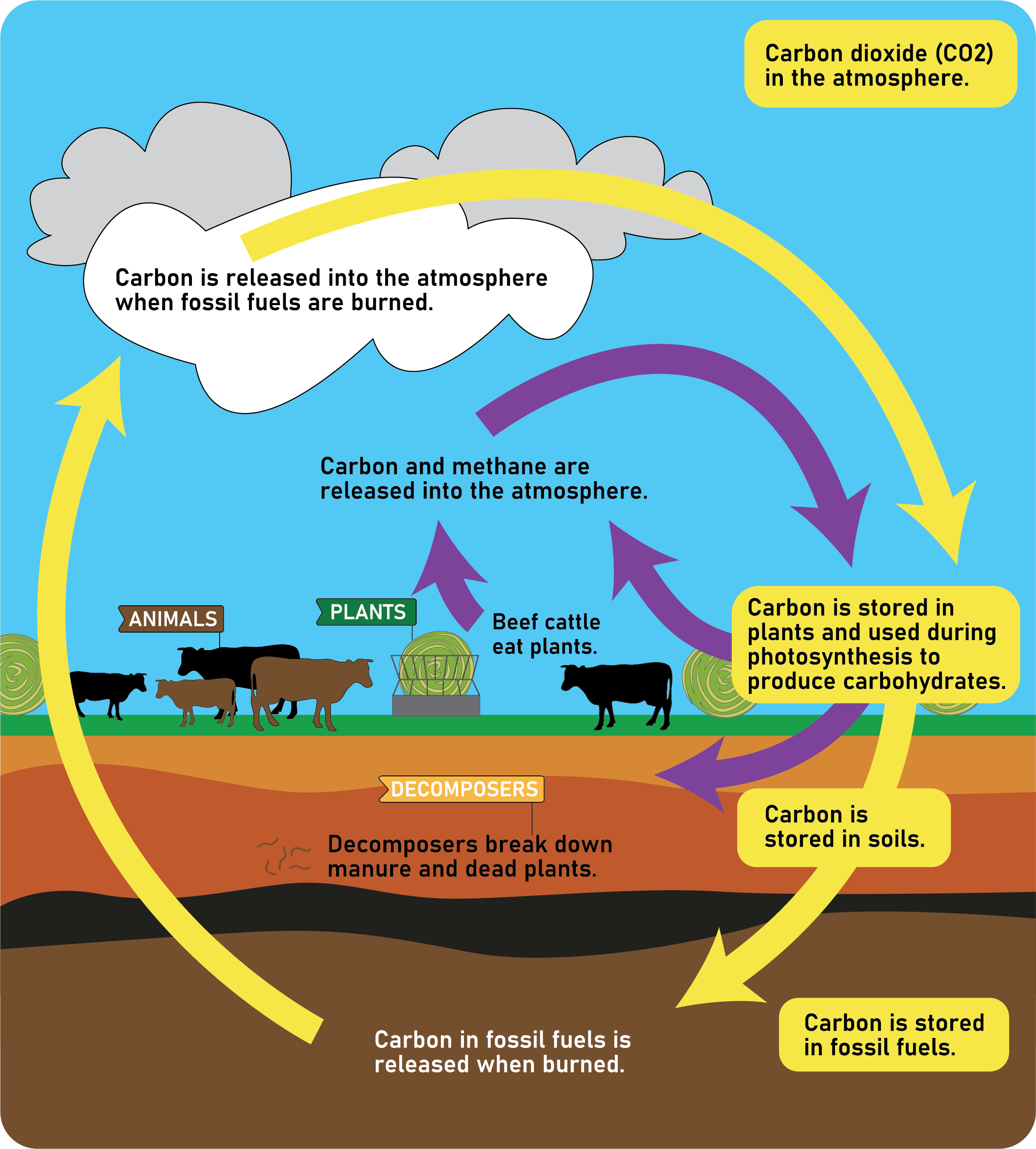The Cycles of Matter

Alfalfa is one of the most popular types of food for cattle. It is high in protien, minerals and carbohydrates.
Plants
Plants, like alfalfa and grass, are producers. They are able to use carbon dioxide, water and energy from the sun to produce their own food. This process is called photosynthesis. The food that is produced during photosynthesis is stored in the plants as sugars (also called carbohydrates).
Animals
Animals like beef cattle are consumers. They consume plants like alfalfa. The cattle's digestive system breaks down the carbohydrates in the alfalfa into nutrients that cattle use to develop and grow. During this consuming and digesting process, cattle release waste, called manure, as well as carbon dioxide and methane into the atmosphere.
Decomposers
Bacteria, fungi, and small animals like ants and worms are decomposers. Decomposers break down the manure that cattle produce into nutrients that are added to the soil so plants can start this cycle again. Decomposers also give off carbon dioxide into the atmosphere for plants to use. Some carbon dioxide may be stored in the ground for millions of years. This carbon dioxide can form fossil fuels like coal or oil. When these fossil fuels are burned, carbon dioxide is released into the atmosphere.
Now it's your turn!
Pick an agricultural plant or animal and create a visualization of how matter moves among plants, animals, decomposers, and the environment.
Cattle can eat alfalfa, so why can't humans?
Have you ever wondered why cattle can eat alfalfa and hay but humans can't? It's all because of our stomachs! Cattle and other animals like sheep and goats have a special digestive system called a ruminant, or four-chamber stomach. Humans only have a one-chamber stomach. Ruminant animals swallow food in large pieces into the first stomach chamber, bring the food back into the mouth and chew it again. This is called "chewing the cud". The food is swallowed again and moves through the four stomach chambers. These chambers contain special bacteria that break down plants into nutrients that the cattle use for energy and growth. When cattle digest the plants they eat, a gas called methane is created. Cattle release methane when they burp and in their manure, which eventually turns back into carbon to feed more plants and the cycle continues.

Cattle play an important role in the carbon cycle. They also provide humans with a nutritious food source: beef.

